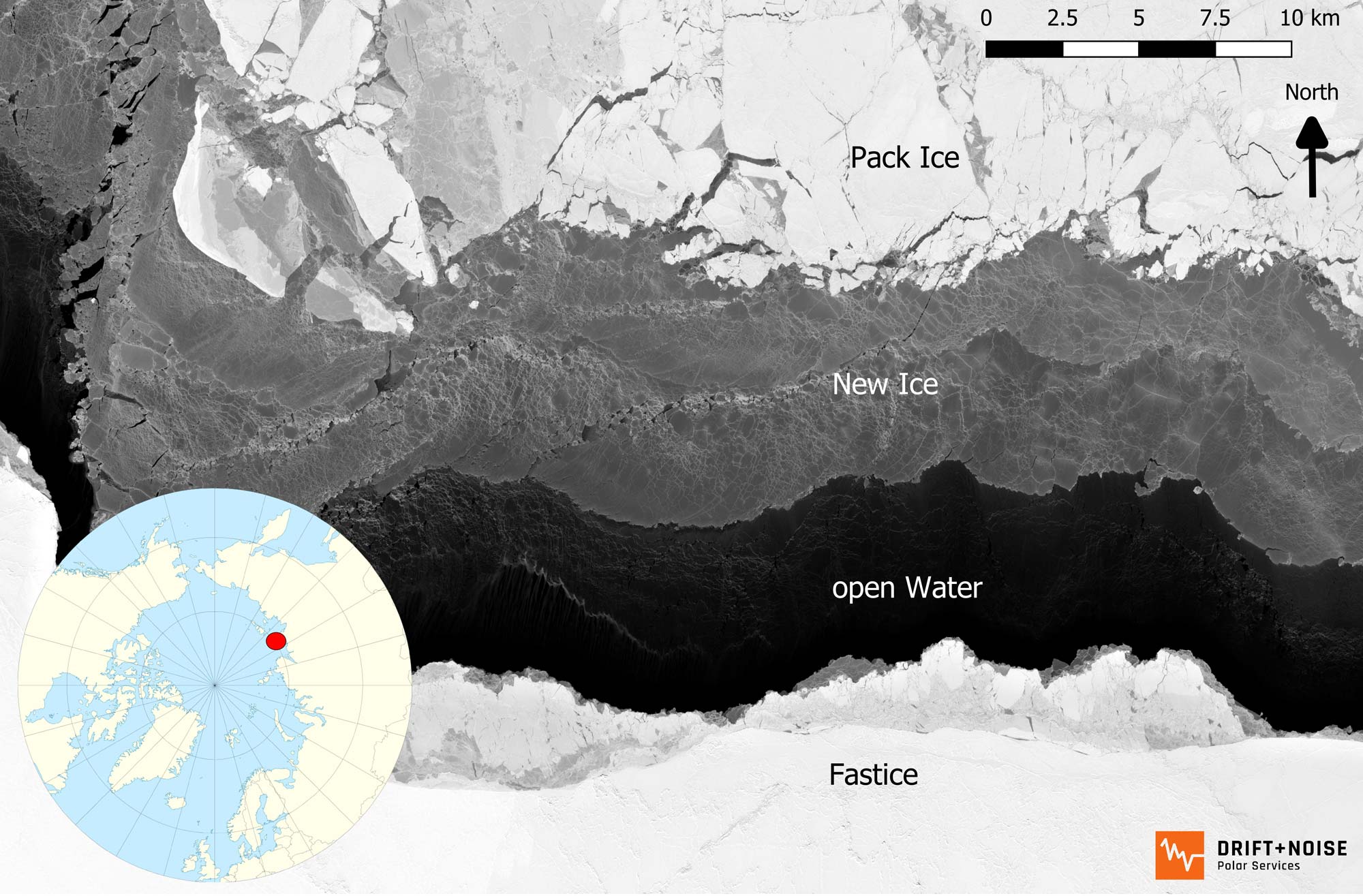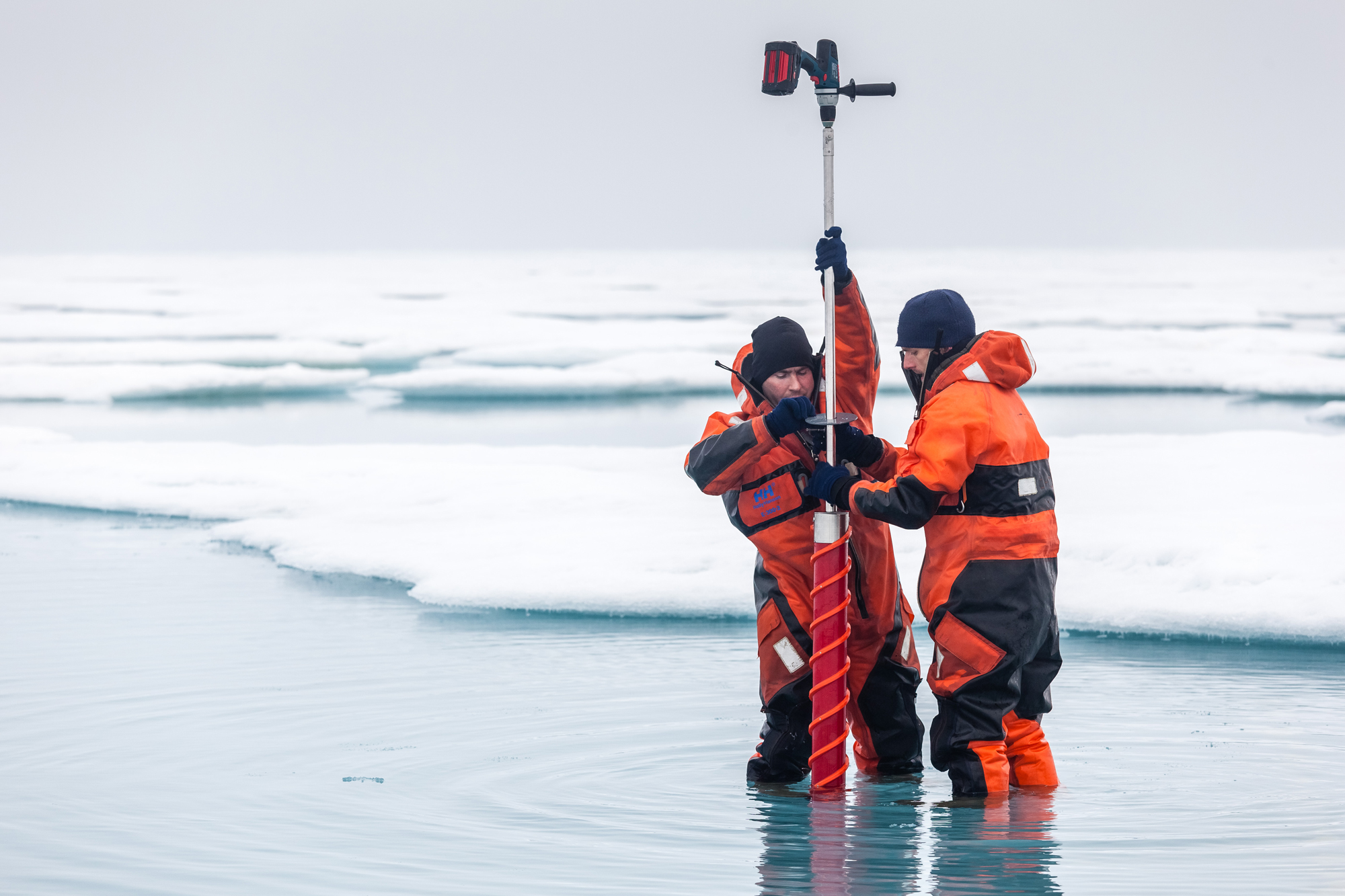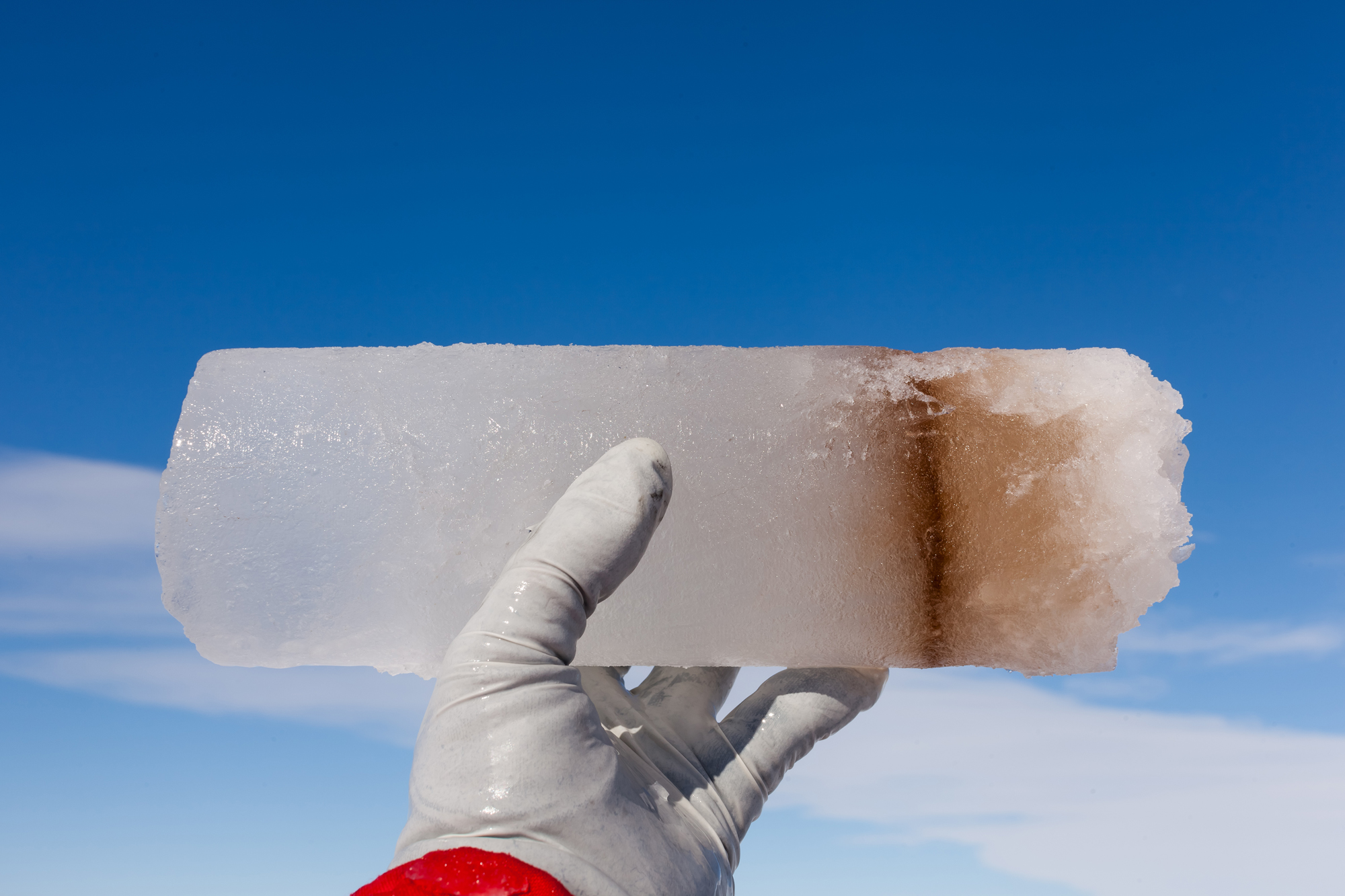In Photos: A Conveyor Belt for Arctic Sea Ice
Eye on the ice

New ice forms in the Laptev Sea along the coast of Russia. New research finds that new sea ice, as seen in gray in this image, now usually melts near the coast instead of traveling through the open Arctic Ocean. This change, caused by rapid warming in the Arctic region, might alter the way nutrients, algae and other particles travel through the ocean.
Traveling Ice

Sea ice forms in the Barents Sea, Kara Sea, Laptev Sea and East Siberian Sea in the wintertime, when temperatures regularly hit 40 below (Celsius and Fahrenheit). The ice forms in less than 100 feet (30 meters) of water in places where rivers dump lots of terrestrial sediments and nutrients. Thus, ice formed in these seas tends to be rich in nutrients, sediments and other biogeochemical components. Strong winds blow the ice out to sea. If it doesn't melt, the ice gets caught up in the Transpolar Drift, a wind-driven current that eventually takes the ice southward toward the Fram Strait and out of the Arctic, where it melts.
The Transpolar Drift

The Transpolar Drift is a major highway for the transport of nutrients throughout the Arctic Ocean. But today, only 20 percent of sea ice formed in the Russian continental shelf seas makes it to the Fram Strait, according to research published April 2, 2019, in the journal Scientific Reports. In 2000, that number was 50 percent. Researchers are working to find out how this decline is affecting the chemistry and ecosystem of the Arctic Ocean.
Dirty Ice

Sediment-rich ice can be seen caught in the Transpolar Drift. Two researchers collect samples from a crane bucket lowered from the research vessel Polarstern. Scientists are trying to understand the movement of algae, nutrients, sediments and even pollutants from the Russian coastline into the central Arctic.
Sampling the Ice

Calf-deep in meltwater, two researchers from the Alfred Wegener Institute take an ice core from the pack ice in the Arctic Ocean. Using these samples, scientists can measure the sediments trapped within the ice. An upcoming expedition, called MOSAiC, will provide the most detailed look yet at the ice composition in the Transpolar Drift. An international group of scientists will deliberately freeze a research vessel into the pack ice. The vessel (staffed by rotating crews) will drift with the ice for a year.
Cold Work

Alfred Wegener Institute researchers take ice samples during a 2017 expedition on the icebreaker Polarstern. Researchers also measure ice thickness on such expeditions. These on-the-ice surveys, combined with satellite observations and aerial flybys, show that ice in the Fram Strait between Greenland and Svalbard is 30 percent thinner today than it was in the early 2000s.
Trapped in Ice

A researcher holds up an ice core taken during an expedition on the icebreaker Polarstern. The color of the ice shows clearly what's trapped inside: sediments, nutrients, perhaps algae. Understanding how the disrupted transport of these materials is affecting the Arctic is a major goal of researchers at the Alfred Wegener Institute.
Get the world’s most fascinating discoveries delivered straight to your inbox.
Take to the skies

To track sea ice, researchers at the Alfred Wegener Institute developed a program called AWI IceBird. Two planes, Polar 5 and 6, use special electromagnetic instruments to measure ice thickness. The research shows that ice in the Transpolar Drift now forms primarily in the open sea. Ice from coastal areas almost always melts before it can reach the circulating current.
Monitoring the melt

Inside one of the AWI IceBird planes, scientists have a bird's-eye view of the melting Arctic. The region is in crisis. According to the National Oceanographic and Atmospheric Administration, surface air temperatures in the Arctic are warming twice as fast as the rest of the globe, and populations of wild reindeer and caribou have dropped by half over two decades. Sea ice has also hit its lowest extent on record in the last 12 years, according to the latest NOAA data.
Opening waters

Ice and open water in the Arctic, as seen from one of AWI IceBird's planes. Scientists expect that the Arctic summers will be ice-free between the 2040s and the 2060s. According to researchers at the Alfred Wegener Institute, the melt of Russian coastal ice before it reaches the open sea is one more step toward that ice-free future.

Stephanie Pappas is a contributing writer for Live Science, covering topics ranging from geoscience to archaeology to the human brain and behavior. She was previously a senior writer for Live Science but is now a freelancer based in Denver, Colorado, and regularly contributes to Scientific American and The Monitor, the monthly magazine of the American Psychological Association. Stephanie received a bachelor's degree in psychology from the University of South Carolina and a graduate certificate in science communication from the University of California, Santa Cruz.


